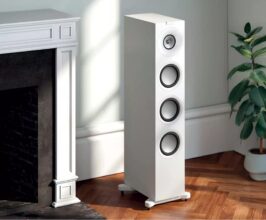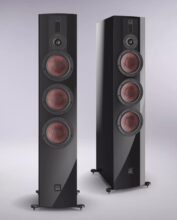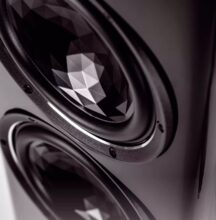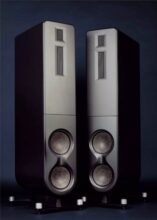Dynaudio Contour 30i floorstanding loudspeaker review
“Dedicated to revealing every detail ” is the headline on the Dynaudio Contour 30i website. This understandable claim is actually a bit misleading. One could mistakenly think these speakers are nit-pickers, constantly pointing things out. Nothing could be further from the truth, and that’s where the overall balance comes into play: Details, yes, lots of them. But always integrated into the overall sound. So, what’s new with the Contour 30i? Tested at € 9,600.
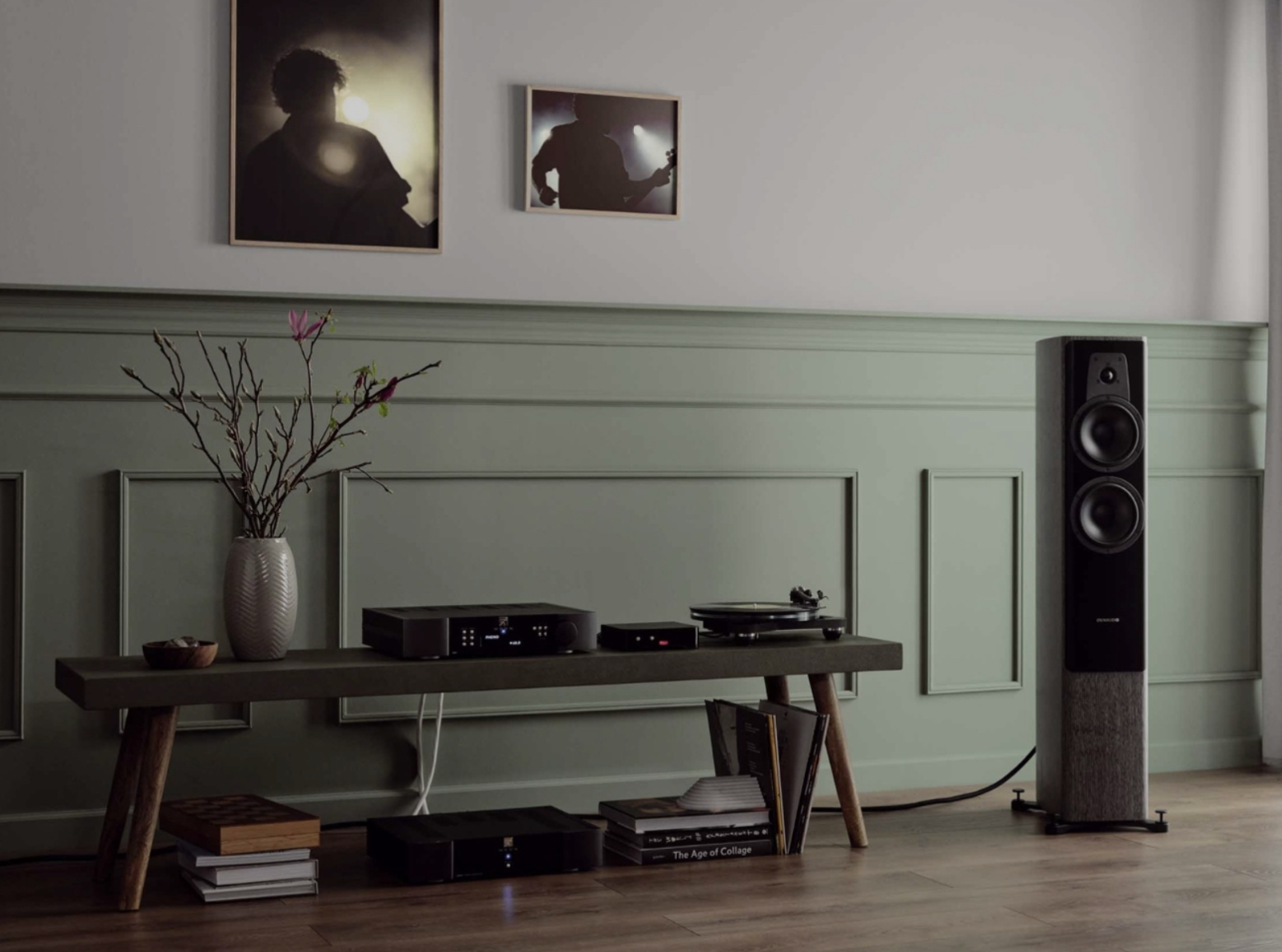
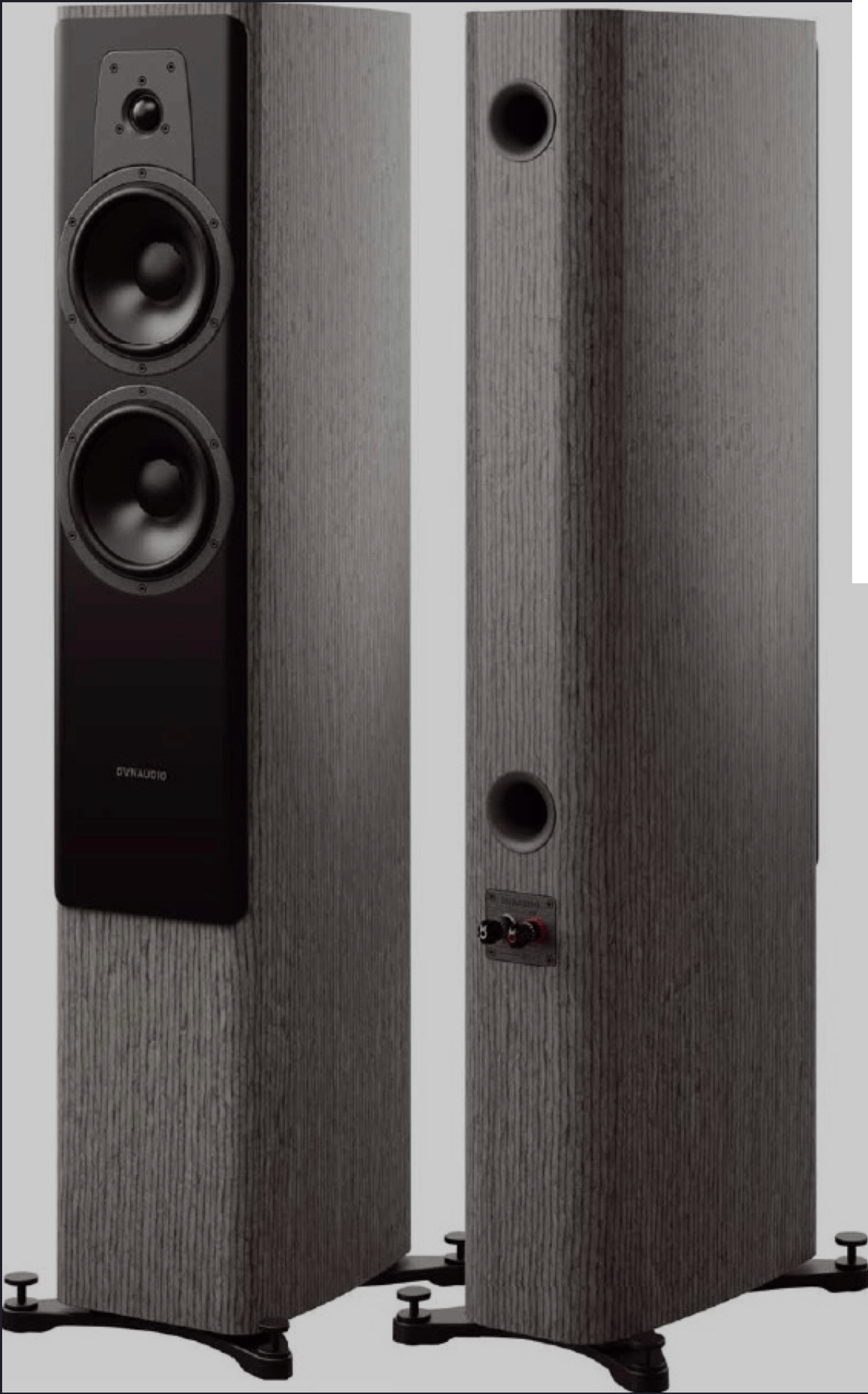

Build and Design
A new tweeter, the Esotar2i, was developed for the entire Contour i series. It benefits, and this is so typical of Dynaudio, from the development of the Esotar3 tweeter for the large Confidence series.
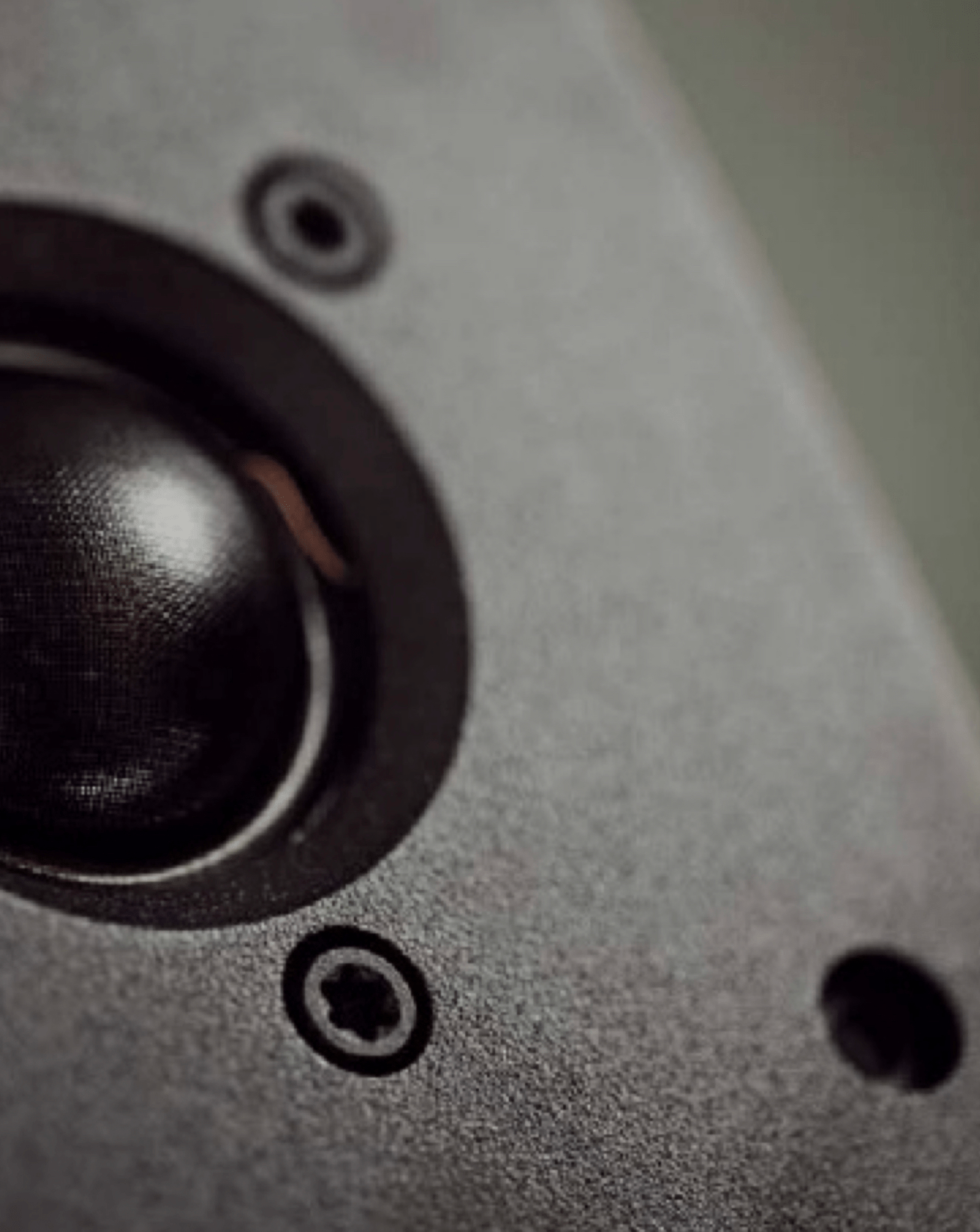
The biggest advantage comes from the so-called Hexis dome, which was complex and expensive to develop but is not costly to manufacture. This Hexis dome is a small dome structure that fits into the cavity behind the diaphragm and replaces the felt ring of earlier days. While the felt ring filtered out many unwanted resonances, it also removed too many valuable high-frequency components.
The Hexis dome is made of plastic with specific indentations and is designed to eliminate unwanted standing waves and ensure that the diaphragm’s movement ends precisely when the signal does: Timing, clarity, spatial impression, and detail accuracy should all benefit. It fascinates me how even with products as good as Dynaudio’s, such refinements are still possible. The Esotar 2i also received a larger absorption chamber, which, along with the Hexis dome, should help reduce unwanted resonances and smooth out the frequency response.
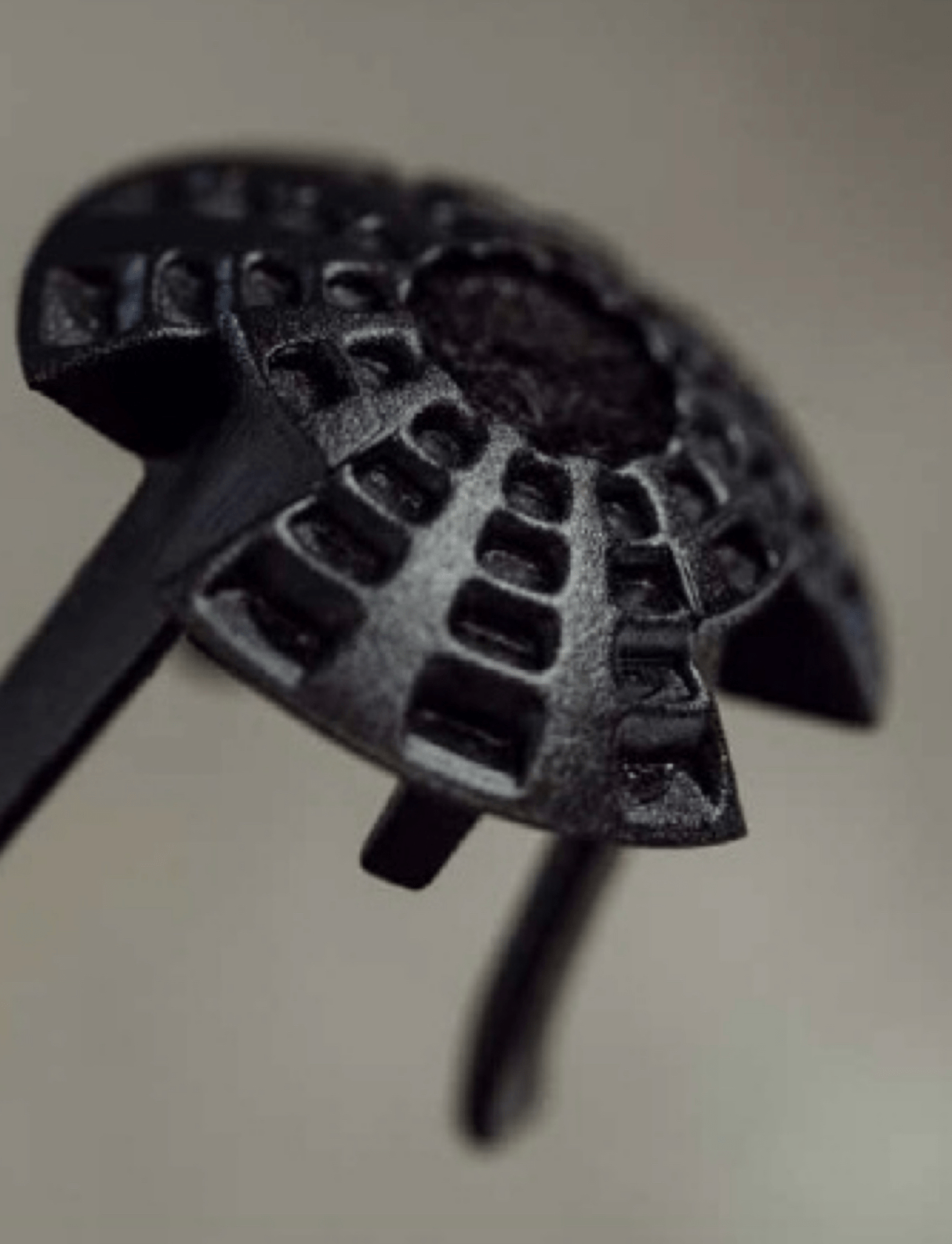
The Contour 30i is equipped with two nimble 18cm MSP woofers. Just as a reminder: MSP is a magnesium silicate polymer, a Dynaudio in-house blend that has been refined over the last few decades. MSP aims to provide what every manufacturer wants in their diaphragm material: an ideal mix of lightness, stiffness, and damping.
While lightweight diaphragms are not necessarily required for pure bass, to put it mildly, Dynaudio also uses this material for their midrange drivers. For the two 18cm drivers, lightweight long-stroke aluminum voice coils with a large diameter have been used. At this point, I must quote Dynaudio because their text is simply brilliant: “Less weight allows for larger diameters with more windings while still being lighter, which means we have more control over diaphragm movement.
And that means more control over the sound – especially at high frequencies and high volumes – exactly what you need in a mid/bass driver. Sure, we experimented with small voice coils – the size other companies use – on the new Contour. Measurements showed they should work for Contour. Our ears told us otherwise, so we went bigger. Our ears were right.” And they are right.
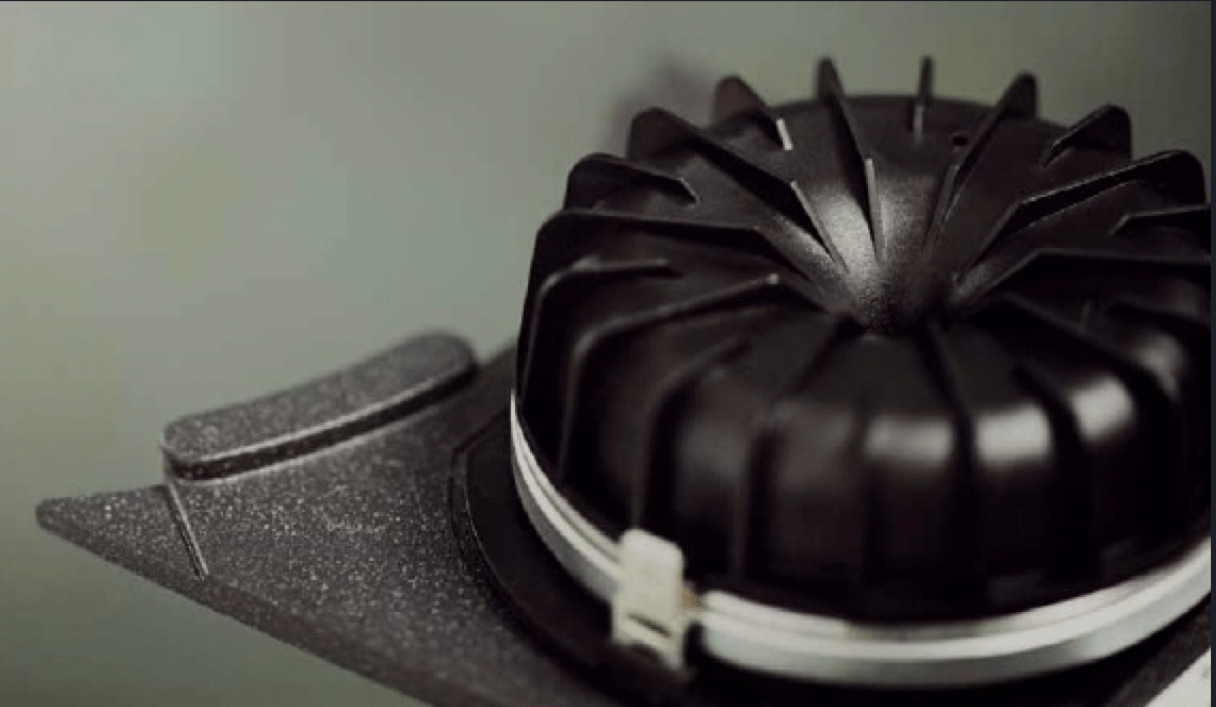
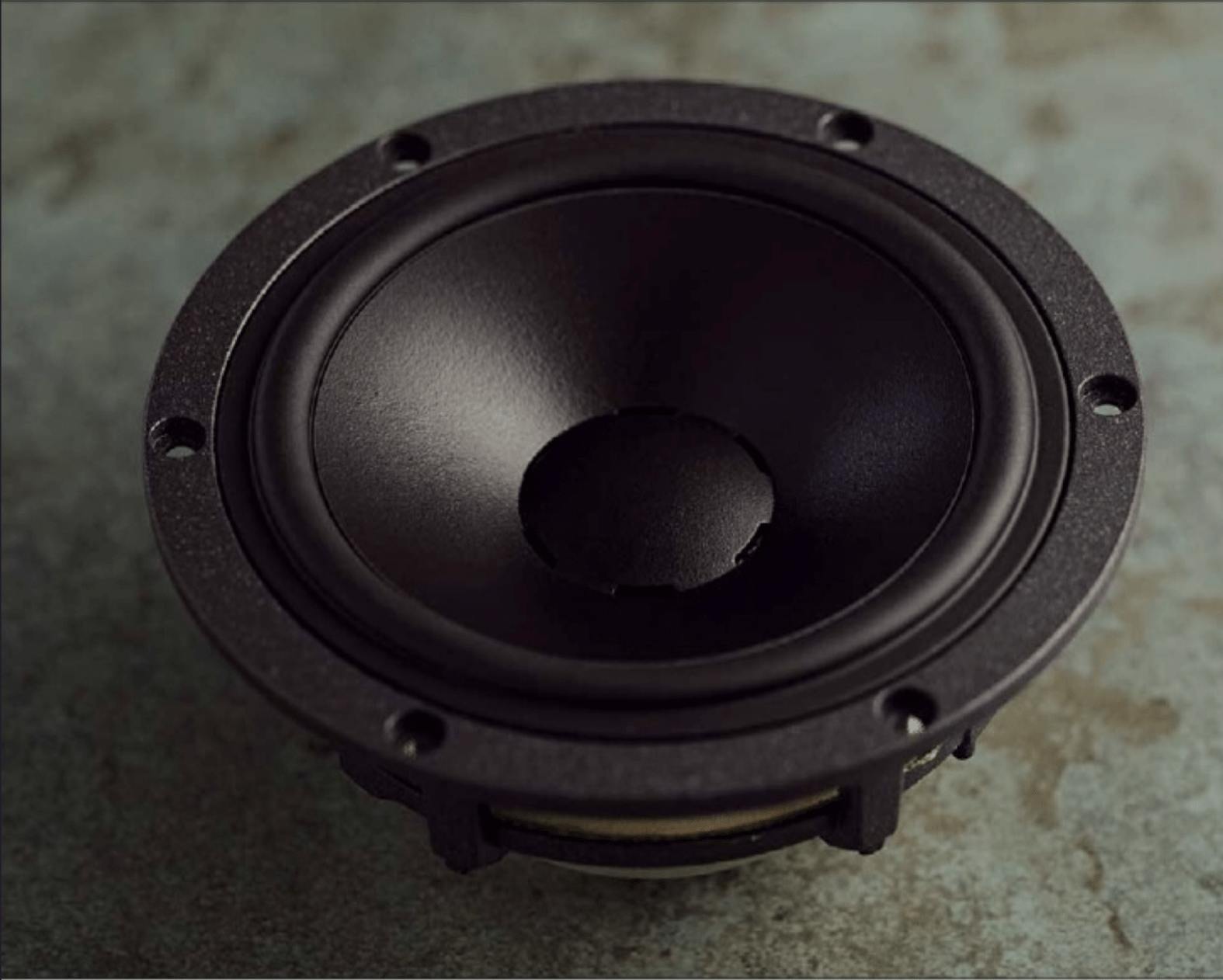
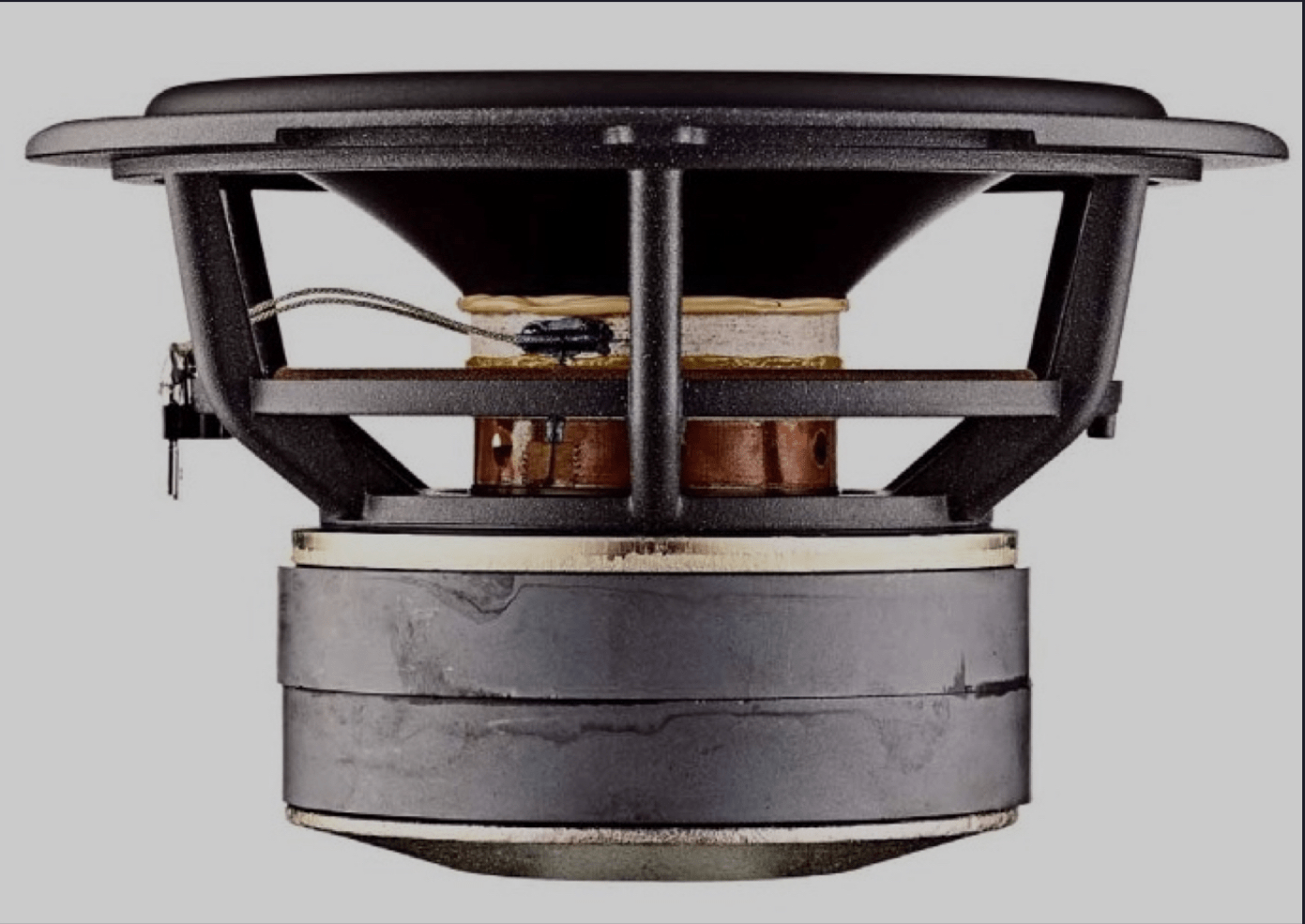
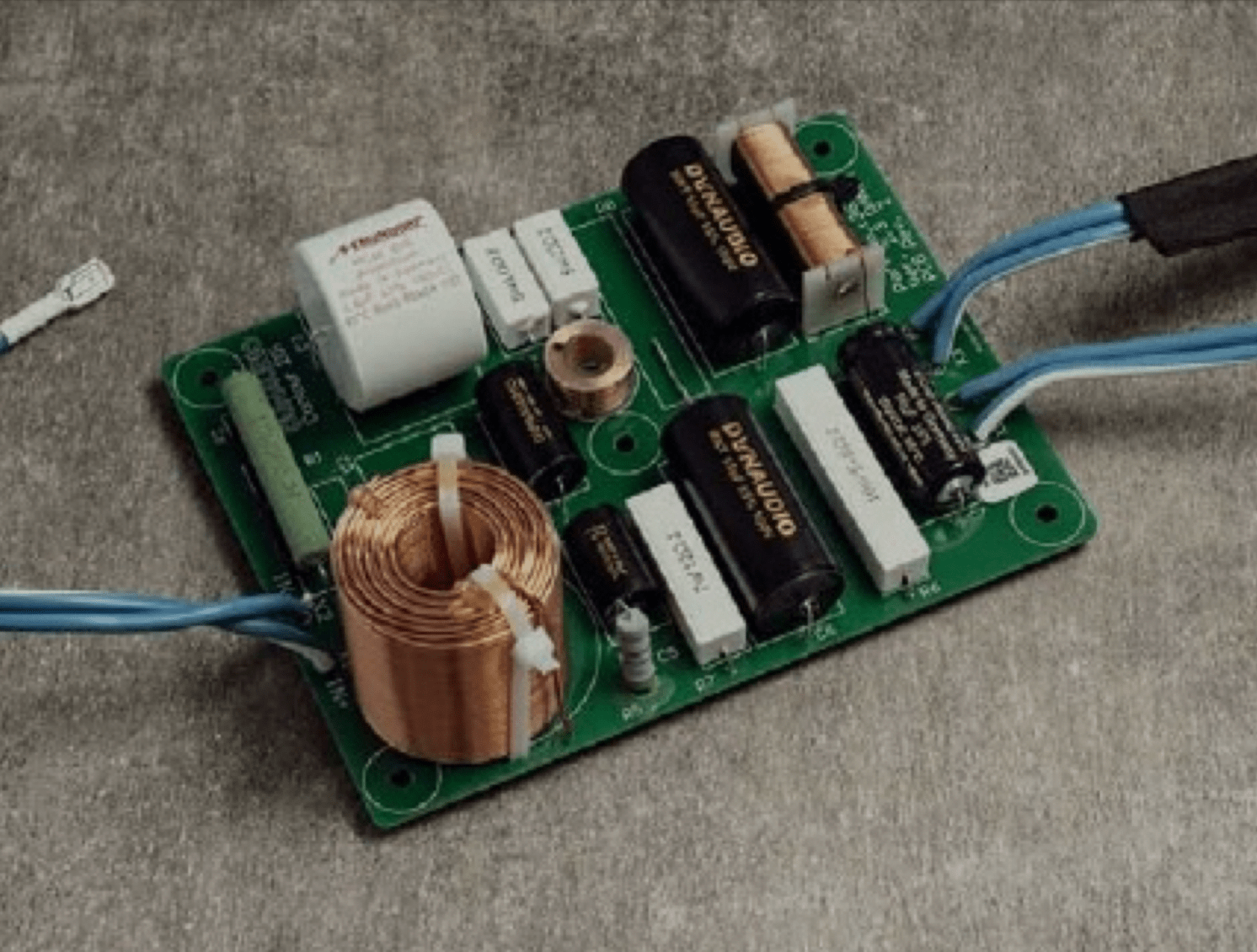
A few years ago, Dynaudio’s new Jupiter measurement room was completed, allowing them to approach their speaker development more effectively and quickly. As a result, they were able to simplify the crossover, eliminating the need for the impedance correction of the previous models. The Contour 30i is a 2.5-way design. Both woofers are technically identical, with one playing up to 300 Hz and the other up to 2.2 kHz. This way, Dynaudio avoids the so-called baffle step of a 2-way design, which dissipates energy from the mid-bass range. The 30i thus plays louder, more energetically, dynamically, and effectively. To keep the cabinet as slim as possible, two smaller bass reflex ports were installed at both the top and bottom.
Dynaudio has changed its cabinet supplier, which benefits the finish of the new series. The Contour 30i has a laminated cabinet made of 11mm MDF panels, with reinforcing, thin MDF panels on the inside of the side walls. Additionally, there is a 14mm thick aluminum front panel, which is recessed into the MDF front but still visibly stands out. The material mix of MDF and aluminum ensures effective combat against unwanted resonances due to their differing properties.
And what about the new finish? Well, when I unboxed the speakers from their massive wooden transport crate with our warehouse manager, he immediately remarked, “And this is a Dynaudio?” Indeed, the new Nordic Silver surface finish is quite unusual. The silver shimmering veneer will divide customers and those who want to be. Conservative Dynaudio fans will likely opt for the beautiful walnut or the high-gloss black version. The new finish is a very nicely grained poplar veneer from sustainable sources, produced through a special lamination process.
Sound Quality
Otto Jørgensen almost becomes impatient when asked about the appropriate amplifier for these speakers: “Any good amplifier works with the Contour 30i. It makes the differences clear, but I’ve never had serious issues with an amplifier on any of our speakers.” Additionally, the impedance minimum of the 30i is a friendly 3.8 ohms at 300 Hz.
So, I connected a nice little preamp/power amp combination from Parasound’s New Classic series and had a lot of fun with it. Straight out of the box, sorry, the wooden crate, the Contour 30i plays fresh, lively, very well-extended, almost cheeky – somehow fitting its new look. I generally appreciate Dynaudio’s subtle sound signature. The rejuvenation of the 30i completes this sound to perfection: this would be a speaker for me.
No matter what I play, I get exactly where Dynaudio wants me and its listeners to be: with the music. This applies to the wonderfully quirky pieces of the unique guitarist Gabor Szabo, who swings and grooves as if there’s no tomorrow. Or for “Room 29” by Jarvis Cocker and Chilly Gonzales. Cocker’s sonorous voice fills the room, standing right in front of me.
And on “Tearjerker,” Chilly Gonzales’s delightfully romantic piano playing sparkles like a collection of sonic gemstones. Illinois Jaquet’s tenor saxophone fills the entire room, and the genius live recordings of Led Zeppelin on “How the West Was Won” transport me straight to 1972. During “Stairway to Heaven,” Robert Plant sings directly to me, and when John Bonham’s legendary drum entry comes in, I celebrate the free, open dynamic sound of the Contour 30i, always in service of the music.
Performance measurement
Frequency Response + Distortion
The Dynaudio floor-standing speaker operates with a very wide frequency range and a deep-reaching bass that gently rolls off below 200 Hz. The dispersion pattern in the critical 1 kHz range is extremely wide, allowing for easy placement in the listening room. The midrange is ever so slightly set back, which contributes to the overall homogeneous sound. The third-order harmonic distortion remains low even at high volumes. With an impedance minimum of 3.8 ohms, the load is classified as friendly.
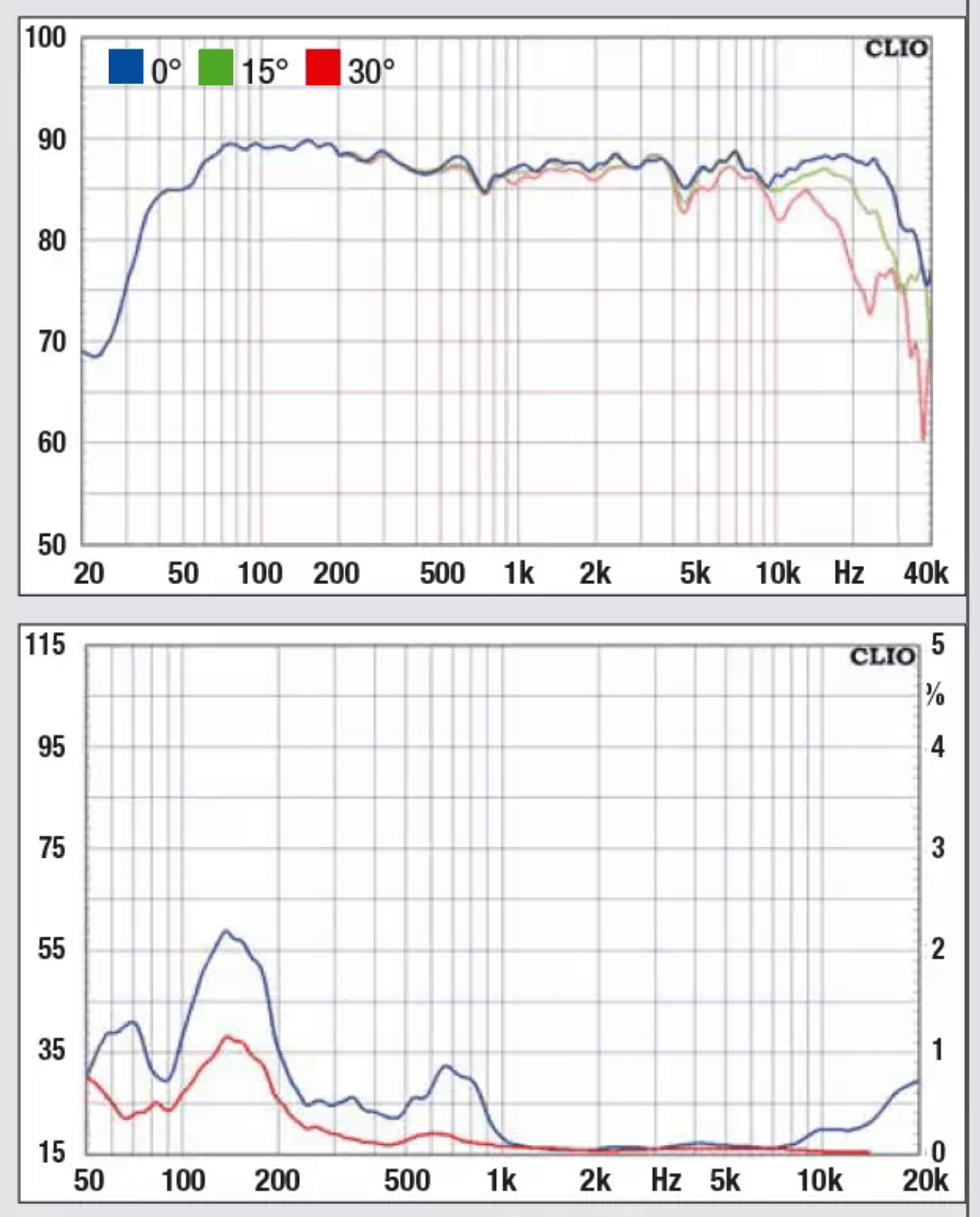
MEASUREMENTS:
- Frequency response, 0/15/30/60 degrees
- Harmonic distortion at 85 dB (red) and 95 dB (green) SPL at 1m
- Impedance curve
Specifications
- Finishes: Walnut Wood; Black High Gloss; Nordic Silver
- Weight: 31.4 kg
- Dimensions (W x H x D in mm): 215 x 1140 x 360
- Cabinet Principle: Bass Reflex
- Frequency Range (± 3 dB): 32 Hz – 23 kHz
- Sensitivity: 87 dB (2.83V/1m)
- Impedance: 4 Ohms
- Crossover: 2.5-way
- Crossover Frequencies: 300 Hz / 2200 Hz
- Crossover Typology: 2nd order
- Drivers: 2 x 18 cm MSP Woofers; 1 x 28 mm Esotar2i Tweeter
- Warranty: 2 years (8 years with registration)
Verdict
Review Ratings:
- Sound: 70% (Rating: 1.1)
- Lab: 15% (Rating: 1.1)
- Practicality: 15% (Rating: 1.1)
When you purchase through links on our site, I may earn an affiliate commission. Here’s how it works.
Dynaudio Contour 30i They're Good
It's a good day at Studio Incar when another big hitter from Dynaudio turns up. In this case we discuss the Dynaudio Contour 30i, ...





